First one glass slips, and then another and another. They crash to the ground with that distinctive sound that usually temporarily silences diners in a restaurant, except there are no diners present yet. The young woman who has let her tray of glasses slide looks mortified. "It's fine, no problem," GMIT food and beverage lecturer Brian Morrissey reassures her, and sets about mustering other students to help with the clear up.
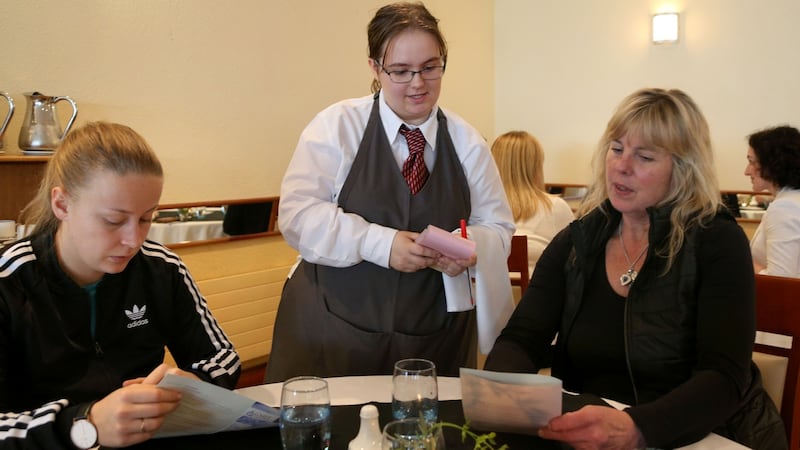
We're in a classroom called the Connemara Training Restaurant, where 16 second-year culinary arts students are preparing the dining room for a lunch service. It's a low-key space, modestly furnished, with simple place settings, and has a pleasant 1970s retro feel to it. The other 16 students in the class are in the adjoining kitchen, working in pairs on a tasting menu, supervised by Cormac Handy.
Many well-known names in the restaurant business have trained at GMIT's College of Tourism and Arts: Kevin Thornton, Neven Maguire, David Hurley of Gregans Castle, Jonathan Keane of the Lodge at Ashford. Since my visit there, one of the students present in the kitchen on the day, Aisling Rock, won the considerable honour of European Young Chef for 2017, after a practical skills competition in Barcelona.
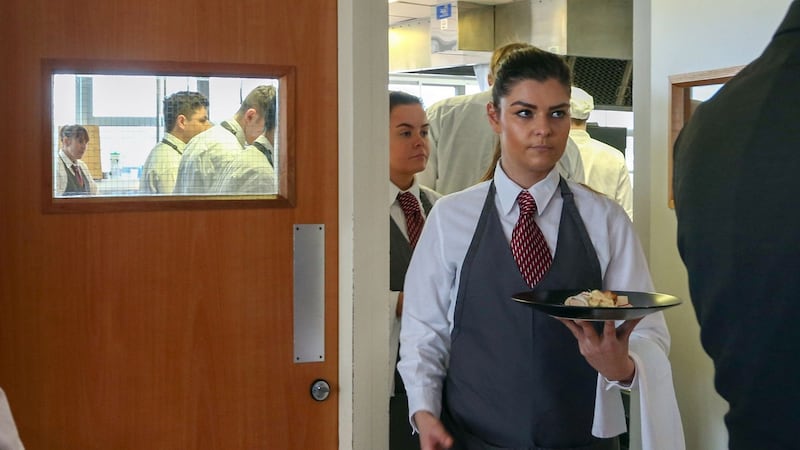
Training restaurant
As part of their training, the students prepare and serve lunch in this fine dining restaurant Monday to Friday, and dinner Monday to Thursday, during term time. It’s open to the public, at a cost of €10 for each meal, and in the evenings, there is also a cocktail bar. Students can eat there at a discounted price of €5 which, in most parts of the country, would hardly buy you a sandwich and coffee, let alone a four-course meal.
"People can book, but we always keep some spaces for walk-ups, so it keeps students thinking on their feet," explains Jacinta Dalton, head of the college's culinary arts and services department. The restaurant can seat 60, although sometimes, such as today, when the menu is a multi-course tasting menu, Handy instructs front of house to limit the number of people they admit. Today, the maximum of covers will be 25. It's holiday time for schools and lots of people are away, so they're not sure how many will turn up today for lunch. The previous week, they had an average of 40 covers each lunch time.
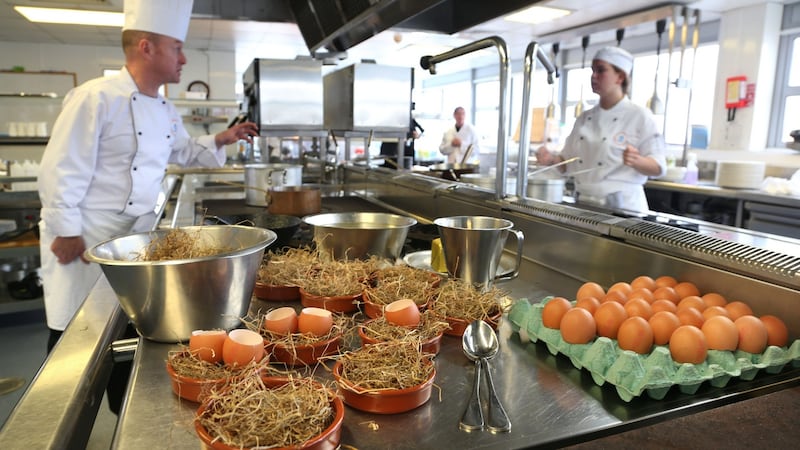
Each kitchen has enough stations for 16 people. They started work at 9am. The restaurant opens at 12.30pm, and Handy is doing constant rounds of the kitchen, advising, tasting, directing and encouraging. The class are working in pairs, and not only are they responsible for preparing the dishes, they also have to figure out how to present and plate them. There’s a large storeroom with several different shapes and colours of plates they can avail of.

This is the tasting menu for lunch on the day I am there.
Breads: tomato and fennel seed; seeded sourdough; brown soda
Tartlet of land and sea: emulsion of oysters and fennel, garnished with flowers and herbs.
Egg, brown butter and potato: eggshell filled with potato cooked in brown butter, garnished with potato foam and grated cured egg yolk.
Fish taco: potato and seaweed taco, with pollock, pickled black garlic puree, herbs, avocado puree and chilli.
Vegetarian option: salt-baked vegetables in a turnip broth; celeriac three ways.
Chicken: corn-fed chicken with corn, kumquat and burnt tomato puree.
Desserts: almond milk pannacotta, pistachio ice-cream, hazelnut shortbread, walnut meringue; or selection of miniature cup cakes, red velvet, lemon and poppy seed, coffee cake.
All the baking is taking place in a kitchen downstairs by first year students, overseen by Clare Gilsenan. Everything else is being prepared in the kitchen directly adjoining the training restaurant room.
The challenge for the students today is to test their technical skills. Handy tells me they’ll be assessed on “flavour, seasoning, consistency, presentation, and their level of preparation”. Each pair of students are intensely focused on their dish. I watch one test their seaweed and potato dough in a tortilla press over and over again until both they and Handy are satisfied with the result. Another pickles tiny cubes of vegetables. One pair deliberate over their architectural plating of white celeriac three ways on black plates, trying different things. There is a large clock in the kitchen, and Hardy keep glancing at it, and reminding them of time left to service.

Pig rearing
As a hobby, Handy keeps pigs. “I don’t have the patience to grow vegetables,” he says. He had five Large Blacks this year; organically reared in a hazelwood. Handy shows me the cold room in the college, where his organic pigs arrive in (they’re already dead, the students don’t personally kill them), and students get a first-hand opportunity at butchering.
“We will butcher the pig as a class, and break it all down, from head down to the hooves.” After butchering, they make black puddings, streaky bacon, sausages, liver pate, and dishes using brawn. The last of Handy’s pigs that came through GMIT yielded 17kg of sausages alone.
The students take it in turns each week with front of house and the kitchen. Back in the restaurant, the tables are laid and silverware gleaming. In the process of laying the tables, I learn a useful trick to make glasses streak-free; hold over steaming water, and then polish. There are fresh centrepieces on each table; water glasses with herbs from the college herb garden.
Morrissey gathers the service group round a table with their order books, appoints one person as manager for the morning, and briefs them on the day’s menu. The little oyster tartlet is going to be today’s amuse bouche. “What’s an amuse bouche?” he asks.
“A party in your mouth?” one young man suggests and, all credit to Morrissey, he doesn’t even smile.
“A tasting menu is easy to serve,” Morrissey says. “You just need to change the cutlery between courses.” The menus are printed for each meal, and on today’s menu, the vegetarian options don’t appear. This is deliberate. “It’s your job to explain what the vegetarian options are to the guest. Always be ahead of their anticipation. Explain what local produce is on the menu today.”
At 12.15pm, the pre-portioned butter is taken out of a chiller, and put on tables. At 12.25pm, the candles are lit, and there is a sense of anticipation.
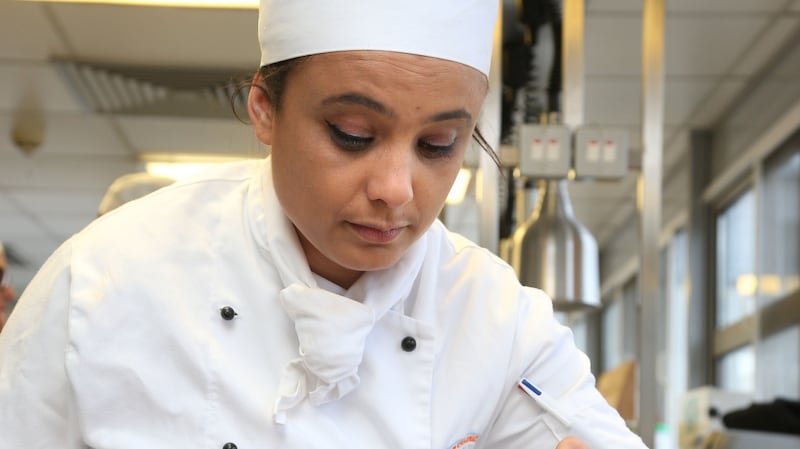
Learning environment
I take a seat at one of the tables. The menu card on the table reminds diners that they are in “a learning environment and teaching continues to take place during your meal”. Thus, Morrissey watches and subtly directs service throughout. I try to keep one eye on service, but I’m swiftly distracted by the beautiful plates with their perfectly sized, delicious portions arriving at my table. The filled eggshells arrive in a dramatic nest of straw, one per person. The fish tacos are speckled with intensely flavoured green seaweed. The pannacotta wobbles like a hula dancer. My waitress sounds prouder of every course she serves, as well she should.
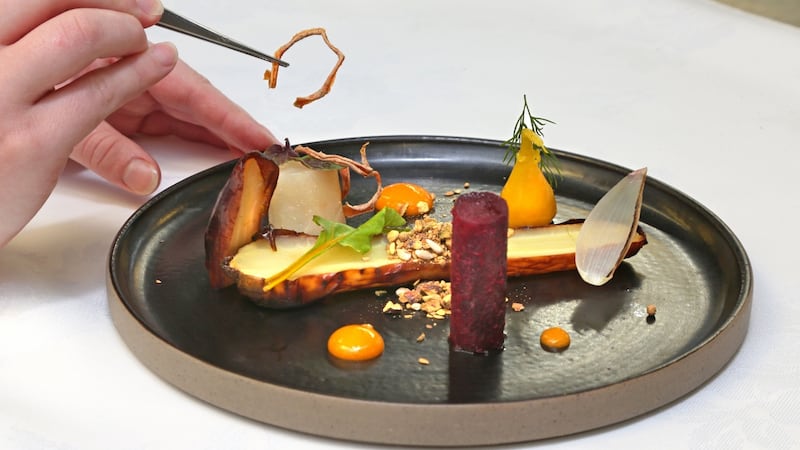
Only 18 arrive for this €10 tasting lunch, which could have served 25. Often it's full, but today, incomprehensibly, it's not. I already want to go back for dinner. It's not just a marvellous opportunity to sample the food of our chefs of tomorrow, but it has to be the best value under-the-radar restaurant in the whole of Ireland.
Bookings at restaurants@gmit.ie Some places reserved for walk-ins.


















